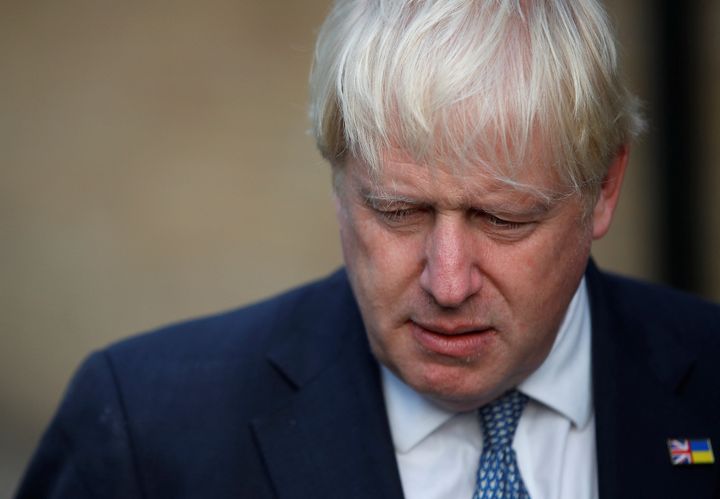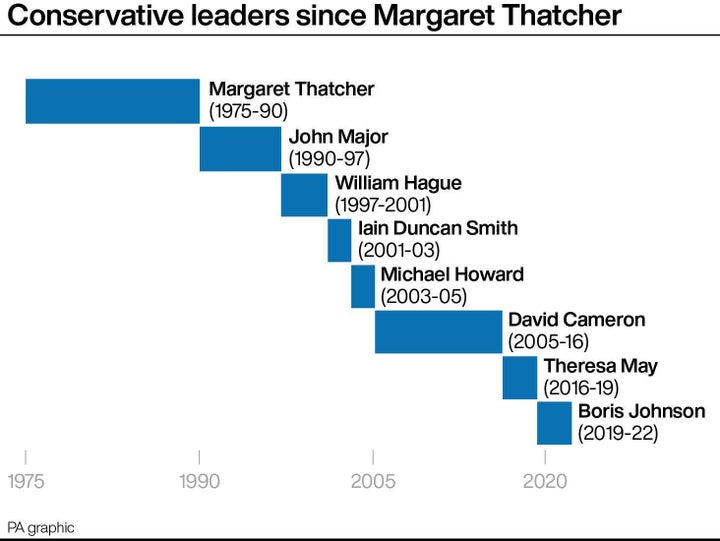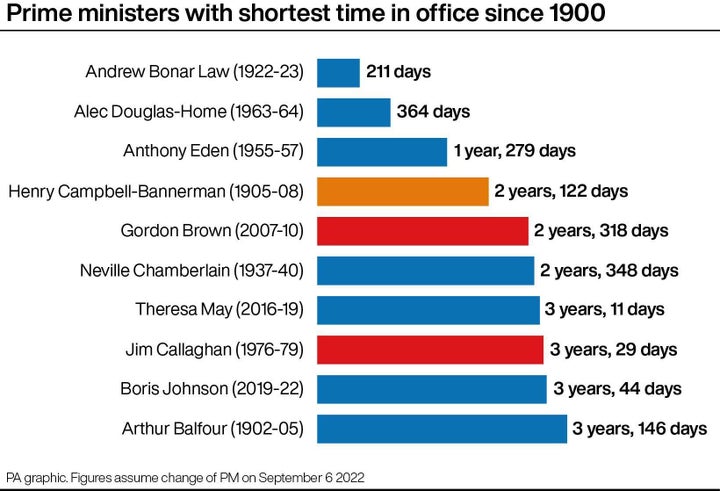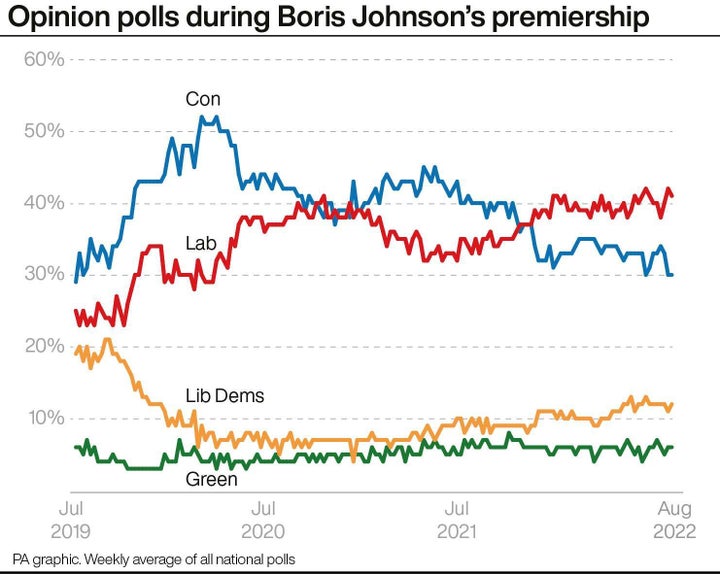
As Boris Johnson prepares to hand over the reins to his successor, his turbulent premiership can be neatly summarised in four graphs.
Monday is his last full day as prime minister. His replacement, widely expected to be the current foreign secretary Liz Truss, will officially start their time in office from Tuesday.
But, as he was essentially pushed into resigning after almost 60 ministers quit his government back in July, Johnson has been tipped by his most loyal supporters for a comeback into frontline politics.
After all, it was a very dramatic fall from grace for the Tory leader who secured an 80-seat majority in the 2019 snap general election.
However, Johnson’s rapid decline – particularly over the last year – calls any suggestion of a comeback into question, especially when it is laid out in these graphics produced by PA news agency.
Using data from YouGov polls, PA tracked Johnson’s net favourability from around January 2020, when the UK officially left the EU after the prime minister secured a deal with the bloc.
At this point, the public were pretty ambivalent about him, with net favourability (the percentage point difference between those who saw him favourably and unfavourably) close to -10. This means there was overall a negative attitude towards him, but only by a relatively narrow margin.
Around the time of the first Covid lockdown in March 2020, it jolts up to over 20 percentage points, but only briefly – it falls back down to -20 within months.
He has a brief bounce back around mid-2021, presumably when Covid measures were lifted, but his ratings soon tumble to new depths as the Owen Paterson scandal and partygate hit the headlines.
By January 2022, Johnson was at almost -60 percentage points, a number he has stayed close to over the last nine months.

In terms of Johnson’s legacy, he is one of the more recent Conservative leaders with a shorter term in office. Looking back to Margaret Thatcher, (she led the Tories for 15 years), only David Cameron and John Major come close to the Iron Lady’s long-standing stint as the head of the party.
Despite being a keen advocate for Thatcher’s policies, Johnson’s leadership lasted for the same amount of time as Theresa May’s, his predecessor with whom he has an intense rivalry.

When compared to all the prime ministers in office over the last 122 years, Johnson also has had the ninth shortest stint.
This comes after he predicted only in June this year that he would win the next general election and would go on to lead the UK into the 2030s.
May served in No.10 for three years and 11 days, Jim Gallaghan served for three years and 29 days while Johnson’s total time in office is narrowly longer at three years and 44 days.

Another graph from PA, looking at the weekly average of all national polls, also paints a pretty bleak picture about where the Tory Party is now after Johnson’s time in office.
Overall, the Conservatives have (mostly) stayed ahead in the general opinion polls since July 2019, with a particularly peak in popularity around the start of 2020.
But in the last few months, Labour have been able to establish a solid lead of around 10 percentage points over the government.

